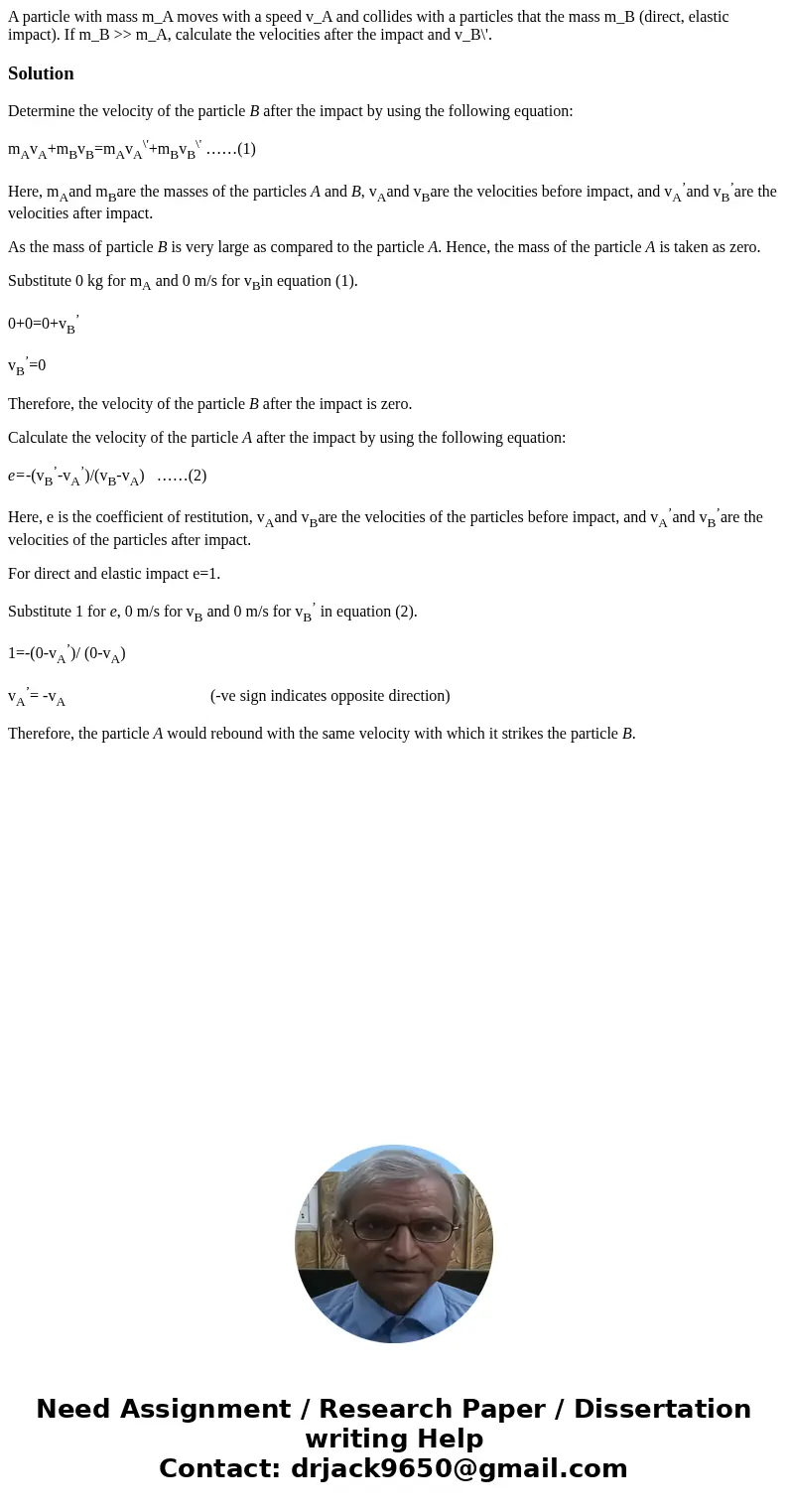A particle with mass mA moves with a speed vA and collides w
Solution
Determine the velocity of the particle B after the impact by using the following equation:
mAvA+mBvB=mAvA\'+mBvB\' ……(1)
Here, mAand mBare the masses of the particles A and B, vAand vBare the velocities before impact, and vA’and vB’are the velocities after impact.
As the mass of particle B is very large as compared to the particle A. Hence, the mass of the particle A is taken as zero.
Substitute 0 kg for mA and 0 m/s for vBin equation (1).
0+0=0+vB’
vB’=0
Therefore, the velocity of the particle B after the impact is zero.
Calculate the velocity of the particle A after the impact by using the following equation:
e=-(vB’-vA’)/(vB-vA) ……(2)
Here, e is the coefficient of restitution, vAand vBare the velocities of the particles before impact, and vA’and vB’are the velocities of the particles after impact.
For direct and elastic impact e=1.
Substitute 1 for e, 0 m/s for vB and 0 m/s for vB’ in equation (2).
1=-(0-vA’)/ (0-vA)
vA’= -vA (-ve sign indicates opposite direction)
Therefore, the particle A would rebound with the same velocity with which it strikes the particle B.

 Homework Sourse
Homework Sourse